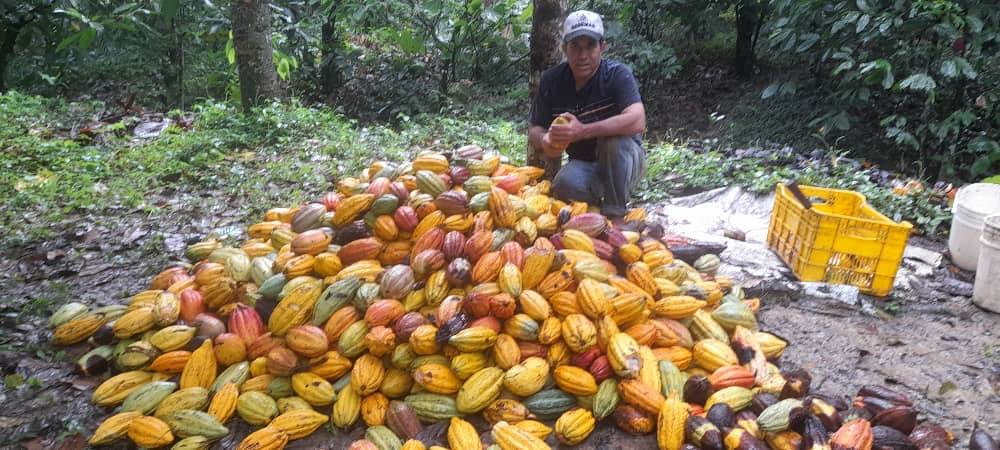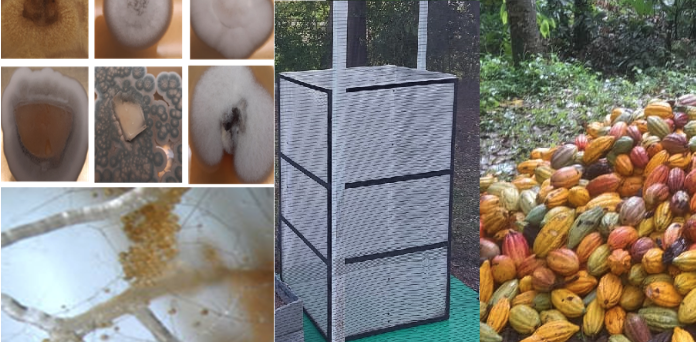The bioaccumulation of cadmium in crops represents a threat to both the health of the population and the ecosystem in general.

The Latin American market of fine aroma national cocoa has faced a significant challenge due to the high concentration of cadmium (Cd) in its almonds. The bioaccumulation of cadmium in crops represents a threat to both human health and the ecosystem in general. Since 2019, the European Union (EU) has reduced the allowed limit of cadmium to 0.8 mg/kg. In response to this problem, a pioneering project has been developed to decrease the presence of cadmium in cocoa almonds through a biotechnological approach based on a consortium of native fungi. Researchers from Argentina (IBBEA, CONICET/UBA, and National Atomic Energy Commission, CNEA), along with researchers from Ecuador (UTM, Technical University of Manabi) and Spain (EEZ-CSIC), are developing a friendly, innovative, and efficient technique that inhibits the entry of this element into the tissues of this agricultural plant of interest. The project, titled 'Reducing bio-process of rhizospheric cadmium solubility,' is funded by the Regional Fund for Agricultural Technology (FONTAGRO) and is aimed at family cocoa farms associated with two participating collecting companies from both Ecuador and Venezuela. Part of this bioprocess was tested with good results at the laboratory, bioreactors, and purifying module levels. Now, researchers are moving forward to test its effectiveness first in greenhouses and then, following an application protocol, in cocoa plant crops exposed to high levels of cadmium (Cd) in Ecuador and Venezuela. This bioprocess is not only innovative from a scientific point of view but also promotes sustainability and collaboration among scientists, farmers, and various actors in the cocoa value chain.
Methods:
The project focuses on the isolation and use of native fungi present in cocoa plantation soils. These fungi are capable of reducing the solubility of cadmium in the rhizosphere and its subsequent transport to the aerial parts of the plants. The consortium of fungi is identified and validated in bioreactors, and then scaled to family farmers' farms. Technical cooperation between scientists, farmers, the business sector, and government is essential for the success of this process.
Results obtained:
The results obtained in this research reveal a series of crucial findings that support the effectiveness and potential of the proposed innovative bioprocess to reduce the solubility of cadmium in the rhizosphere of cocoa plants and its subsequent accumulation in their almonds. Among the main conclusions are:
Efficiency in phosphorus solubilization: The native soil microbiota in organic lemon plantations has shown high efficiency in phosphorus solubilization. This has a direct impact on the healthy growth of cocoa seedlings and offers an additional benefit by eliminating the need to incorporate phosphorus fertilizers into the soil, which is normally contaminated with cadmium.
Fungal strain tolerance: The existence of native saprophytic fungal strains and some from the collection of the Zaidín Experimental Station, such as the fungus Phanerochaete chrysosporium, which are notable for their ability to tolerate medium/high levels of cadmium in soils, has been identified. This discovery is essential, as these strains could be used in the fungal consortium to effectively reduce the cadmium concentration in cocoa almonds.
Biorreactors at TRL 4 and scalability: The design and validation phase in the bioreactors have reached the level of technological maturity TRL 4. Furthermore, it has been demonstrated that these are scalable to TRL 6 level in plant purification modules. All this allows evaluating how cadmium behaves and is distributed under various physicochemical-biological conditions, which is crucial for understanding and optimizing the cadmium reduction process. Additionally, it ensures that the calibrations and results obtained in the design phase are maintained when scaling up the process, which is essential for its large-scale implementation.

The innovative bioprocess proposed in this project has the potential to transform cocoa production in Latin America. The collaboration between scientists, farmers, and various stakeholders demonstrates the importance of addressing environmental and economic challenges together.
https://drive.google.com/file/d/171O5UPojuEeGYwT64jQNS0qTbRHHLNhS/view
Reducing the concentration of cadmium in cocoa almonds will not only improve product quality but also benefit local communities by increasing farmers' income and empowering women in the value chain. This sustainable biotechnological approach lays the groundwork for a healthier and more prosperous future in cocoa production in the region.




